Washington Square: Suburban Dream Under Glass
When Washington Square Mall opened on a crisp October morning in 1974, it was impossible not to feel a little dazzled. Indianapolis had seen shopping centers before, but nothing like this.
Edward J. DeBartolo Sr., the Ohio developer who had already given the city Lafayette Square and Castleton Square, seemed to be drawing a perfect circle around the suburbs.
Washington Square completed the loop, landing on the east side with about one million square feet of promise and polished terrazzo.
Inside, the space felt like the future. Eight fountains burbled under skylights.
Benches were carpeted, planters bloomed with tropical foliage, and mirrored mobiles spun lazily in the central court. The air smelled faintly of perfume and possibility.
Department stores were the heavyweights: L.S. Ayres and William H. Block anchored the complex, soon joined by J.C. Penney, Sears, and, in 1978, a sleek new Lazarus.
It wasn't just a mall; it was a civic event. Families came not only to shop but to stroll. Teenagers discovered the art of loitering in climate-controlled comfort.
Eastgate Shopping Center, the open-air plaza a few miles away, emptied almost overnight.
Washington Square became the gravitational center of Indianapolis's east side, a suburban cathedral of commerce where even the fountains felt aspirational.
The Age of Abundance
For about twenty years, Washington Square Mall did exactly what it was built to do. On weekends, the parking lot was full, the arcade was packed, and families lined up at MCL Cafeteria for lunch.
Holiday decorations went up early and stayed long after New Year's. The fountains ran, the skylights poured light over the terrazzo floors, and the whole place looked permanent, as if it might never change.
In the 1980s, changes in the retail world began to reach the mall. Department store chains were merging and rebranding.
Federated Department Stores bought Block's and folded it into Lazarus, removing one of the original names from the building.
Other national stores began consolidating, and the big suburban malls started to feel less unique and more like copies of one another.
Washington Square Mall managed to stay steady through all the changes. People still came every week, doing the same errands they'd always done.
The stores were familiar, the air was cool, and everyone knew where everything was. For people on the east side, it was just part of life.
You went there to shop, to grab lunch, or to see someone you knew. The mall was simply there, the way it had always been.
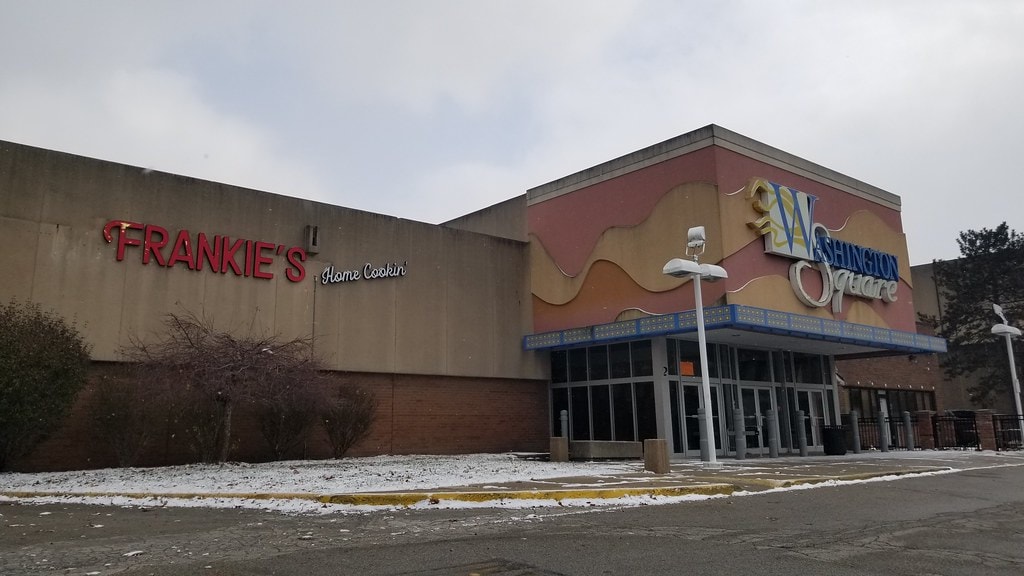
Reinvention in an Uneasy Time
When Simon Property Group bought Washington Square Mall in 1996, the company said it wanted to give the aging property a second chance.
Simon was based in Indianapolis and already ran several malls across the city, so the deal made sense.
In 1999, the company started a renovation. The front entrance was rebuilt, new skylights were installed, and the interior floors were replaced.
Montgomery Ward closed that same year, and Simon brought in Target to take over the space. The new store opened in October 1999 and immediately became one of the busiest parts of the property.
The renovation looked good, but the retail world was shifting. Department stores were losing ground, and online shopping was beginning to draw customers away.
Washington Square still had its regular crowd, but the energy that once filled the mall was fading.
For the next few years, daily life went on. Everything seemed normal on the surface, but the traffic wasn't the same.
The mall was clean and bright, but it no longer felt like the center of the east side. It was holding steady, but the edges were starting to show.
The Slow Unraveling
By the early 2000s, Washington Square Mall was losing ground. JCPenney closed in 2001, and Lazarus followed in 2002.
Burlington Coat Factory moved into the old JCPenney space, and Dick's Sporting Goods took over the former Lazarus building a few years later, but the change in tenants made the mall feel different.
The big department stores that once defined it were gone, replaced by lower-cost retailers that drew smaller crowds.
In 2005, an AMC Showplace theater opened next to the mall and briefly brought more people back on weekends.
Around the same time, L.S. Ayres became Macy's after a company merger, but that store shut down by 2008.
Each new opening felt less significant than the one before it, and each closure left the building a little quieter.
By 2013, fewer than half the stores were still open. Many hallways were empty in the middle of the day.
Simon Property Group, which had owned the mall since the 1990s, decided to stop trying to turn it around.
In 2014, the company handed the property back to its lender. A few months later, Sears announced that it would close, removing the last original anchor store.

The Bargain Buyer
Two years later, a new name appeared on the deed: Kohan Retail Investment Group.
The New York firm specialized in distressed malls, scooping them up cheap and trying to will them back to life.
The sale price was $2.5 million, barely enough to buy a few suburban homes in the surrounding neighborhoods. For a while, Kohan's approach had a certain scrappy charm.
Vacant storefronts became family-run shops, dance studios, and discount boutiques. The rents were low, and the rules were looser.
A sense of improvisation filled the concourse, the kind that comes from necessity rather than design. But deferred maintenance piled up faster than tenants.
In 2016, Aeropostale closed, and in 2018, Buffalo Wild Wings followed. During that time, property taxes also went unpaid.
The mall was once again on the county's auction block, this time for delinquency rather than ambition.
The dream of revival flickered, then faded. The fountains that once symbolized prosperity had long been dry.
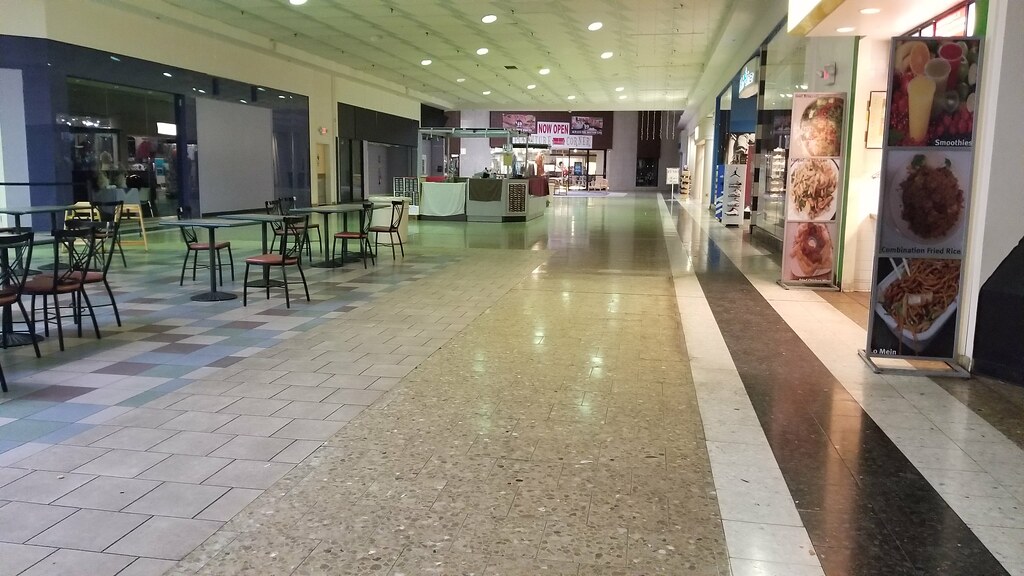
Under New Ownership, Again
Durga Property LLC bought Washington Square Mall in 2019 and announced plans to restore the property. The company promised better lighting, new security measures, and long-overdue repairs.
Local television crews toured the mall and reported that 81 of 101 spaces were leased at the time. The announcement made it sound like a turnaround was finally underway. The progress didn't last.
By early 2020, Dick's Sporting Goods and Burlington Coat Factory had both closed, leaving Target as the only national retailer.
Target's store wasn't connected to the main mall, which made the rest of the property feel separate and empty.
Over the next few years, the tenants that remained were mostly small local businesses. Jewelry shops, resale stores, a day care, and a dance studio stayed open, but most of the food court was closed.
A discount store called Chacharas Chuchin later moved into the space that once housed Dick's Sporting Goods, and Furniture House opened in the former Macy's location.
City inspectors started visiting more often. Fires broke out in nearby dumpsters, and the health department cited the owners for roof leaks, broken air conditioning, and trash violations.
In 2025, Durga Property was fined $2,500 upfront and faced additional daily penalties until the problems were fixed.
Once a busy shopping center, the mall had become a struggling property fighting to stay open.
The Sale and the Silence
On October 28, 2025, it was confirmed that Washington Square Mall was for sale. After fifty years, the east side's best-known landmark had reached another uncertain moment.
Some people want the site cleared and rebuilt from scratch. Others think it could be restored piece by piece.
Either way, the next chapter will require money and leadership, two things the property hasn't had in years.
Inside, the atmosphere is tense. The few remaining shop owners are waiting for news about what will happen to them.
They want to stay, to be part of whatever comes next, but no one has told them what that might look like.
More than forty stores are vacant, and faded signs still point toward anchors that have long been closed. For those who remember what the mall once was, the quiet feels strange.
The fountains that once filled the air with sound are gone. The terrazzo floors have dulled with age. The crowds that once packed the halls during the holidays are now memories.
Walking through the building feels less like shopping and more like visiting a relic.
Washington Square Mall once stood for the promise of suburban convenience and community. Its long decline has left behind only the shell of that idea.
Washington Square Mall hasn't vanished; it has simply outlived the world that built it.

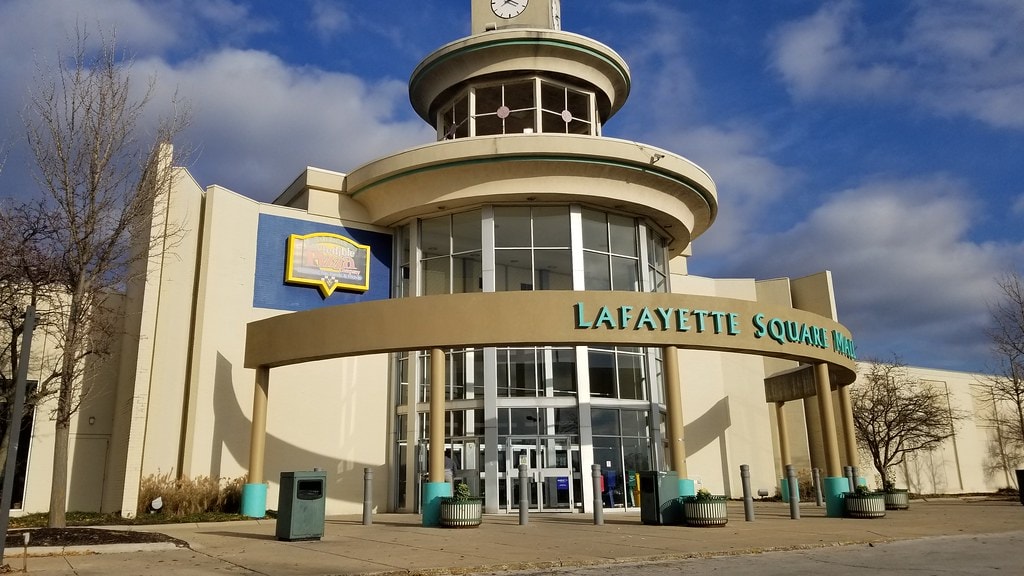
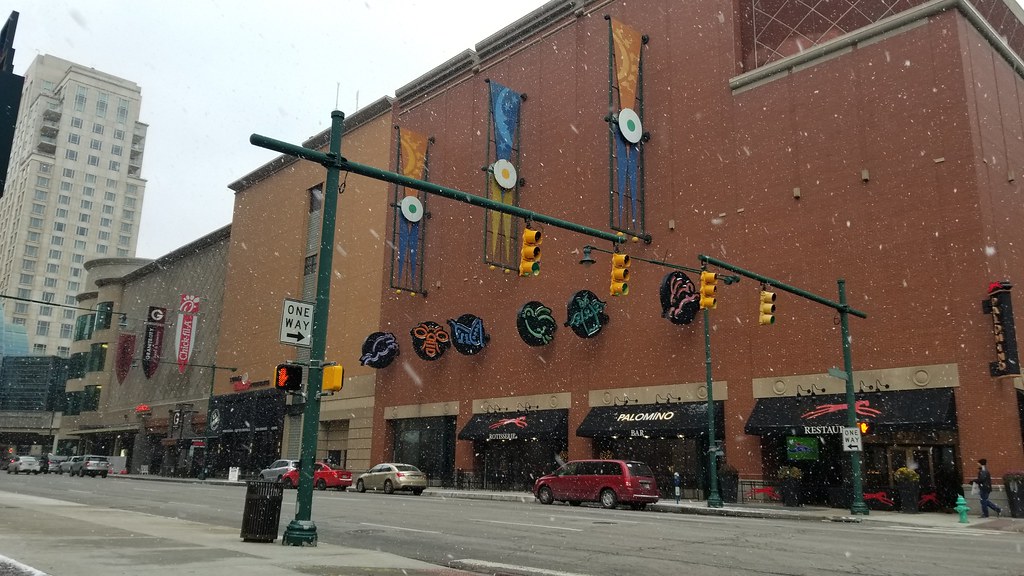
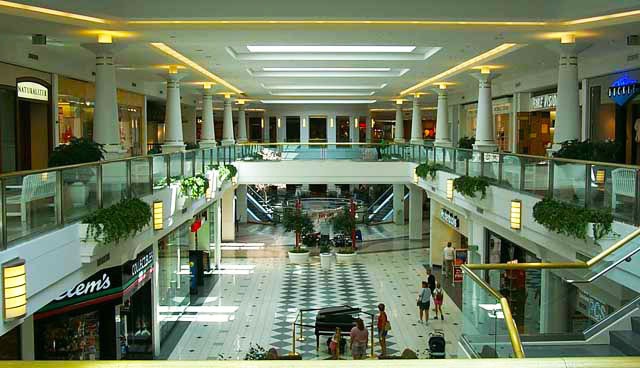
I really feel for the people on the far east side. The real demise of Washington Sq. started in the late 1990s and early 2000s. Time and again, one could shop there, and the clerks would say, "We don't have it here, but we do have it at our Castleton store." After hearing that enough times it caused their customers to go to Castleton and skip Washington Sq. The Warren Township Development Association addressed this with several mall managers, but it fell on deaf ears.
It is truly disheartening to hear about the challenges faced by the far east residents. Washington Square Mall's decline was a sad event for the local community. While it is unfortunate that the concerns of the Warren Township Development Association were not adequately addressed, it is vital to remain optimistic and actively pursue new avenues for growth and development in the area.
tmi think the main reason was the same thing that is happening in Castleton Square Mall. There were robberies outside in the parking lot and gangs making their presence known walking through the mall, and someone told us that there were items stolen from many stores. When the gangs, robberies, and stolen merchandise start to happen, people do not want to take the chance of having that happen to them, and businesses see less shoppers because of that, they leave. i myself had something happen where an older lady with a cane coming of J.C. Penny's, and several gang members kicked her cane, and she fell. I saw it and chased them to their car trying to get their license, but they backed out, realizing that's what I was intending to do. My wife and myself helped the lady with her cane and packages. My wife told me I shouldn't have done that because they could have had guns. people were watching and aware, and I'm sure Jcpenney lost customers that night. Castleton Square may go the same way and may already be going downhill. People I know are saying they are getting scared of what's happening there now!
The unfortunate events at Washington Square Mall and the potential decline of Castleton Square Mall serve as a reminder of the need for robust security measures in public spaces. However, it is essential to remain hopeful that concerted efforts by the community and authorities can improve the overall safety and well-being of mall visitors. It is commendable that you took the initiative to assist the older lady in distress, and your actions demonstrate the power of individual contributions to creating a safer environment!
No one wants to say it, but the problem with the Washington Square Mall is the people that frequent the Mall. In the story, it's mentioned that armed guards were hired to protect shoppers. That's because of the criminal element on the east side of the city. The same thing happened years ago to the Lafayette Square Mall on the west side of the city. Criminals and people who have no respect for others are the problems. Retailers don't want to put up with all of that.
The concerns mentioned regarding Washington Square Mall and Lafayette Square Mall highlight the need for an ongoing dialogue between retailers, mall management, police, and the community. Open communication and a proactive approach to addressing these issues can help to foster a safer, more enjoyable shopping experience for everyone involved.
There were several reasons that have led to the downfall for Washington Square. The first one came with the excessive rise in rent to the businesses. The owners of the Mall became very greedy and continued this business practice. As businesses were unable or unwilling to pay those prices for rent and began leaving those spaces, panic began setting in and empty stores were popping up combined with the increase in thefts in the stores and crime in the area made new businesses not necessarily want to take a chance on a location inside the mall given the fact of the crime + over valued rent prices per square footage. Lack of security at the mall in the beginning of the decline took it's toll. The eastside has now been basically left a commerical desert when it comes to shopping (JC Penny's, Macy's, etc) and restaurants due to socio-economic factors
Thank you for sharing your insights on the contributing factors that led to the decline of Washington Square Mall. Communities must learn from these experiences and work together to create a more sustainable and secure environment for businesses and residents.
why is no one speaking the obvious? Just like Chicago, Indy has a black youth crime problem. Not that all black youth are bad. But at Castleton.. young black people have dominated the statistic in violent crimes. And the black community is not taking their responsibility to stop it seriously. The mayor.. the local AG and the property owners do nothing or at best very little to help. A surprising amount of these kids have guns. I say that because I have seen black youth with guns at Castleton more times than not. This is not a culture problem. it's a lack of enforcement problem. Until you make police and mall owners enforce rules and make these kids suffer the shame and pain of their actions you will continue growing this deterioration.
Thank you for expressing your concerns about safety at Washington Square Mall. It's crucial for all parties—community members, law enforcement, and property owners—to come together to address these issues. By working collaboratively and promoting open dialogue, you can find solutions that make the community safer.
I do a lot of rehab work on the east side of indianapolis and currently we are in the beginning stages of redeveloping an apartment complex right next door to the mall. All 500 or so apartments are getting revitalized and being brought up to quite nice standards. But in this process I see the devastation, that some not all, the residents have created on this development. I see on a daily basis the bad element that lurks around this place the ones that the owners are slowly removing. I must admit I do carry a firearm for my own and others personal protection and I am well trained to do so being a rifle and pistol instructor for over 20 years. But even so it chills me to walk around that area later in the evening when I have to be there. I’ve walked up on many people blatantly doing drugs of all sorts and I’m not talking about taking a puff of weed but the hard stuff. I use to come to this mall in the 90’s and also castleton mall. Now I don’t even go to castleton if I can avoid it. The police in the area really seem to try their best but it seems like there are always shootings and chases all over the area. There are still many areas around that destination that pleasant to be in and around and I would love to see the mall become rejuvenated and become a destination again but it’s definitely going to take a lot of thought and work to make it happen!!
Thank you for sharing your insights on the Washington Square Mall area. It's great to hear about the ongoing apartment revitalization project, and it's evident that you care deeply about improving the community. People must be aware of these issues to collectively work towards a safer and more vibrant environment for everyone.
The outside appearance is horrible. Many times I've called the Mayor's office only to be directed to the Board of health, only to be ignored. The mall and the surrounding areas can be revitalized. Clean from the outside in. I think if the current owner doesn't want to make any improvements they should give it up.
Thank you for voicing your concerns about the mall's appearance. I share your hope for revitalization. Community spaces need to be well-maintained and inviting.